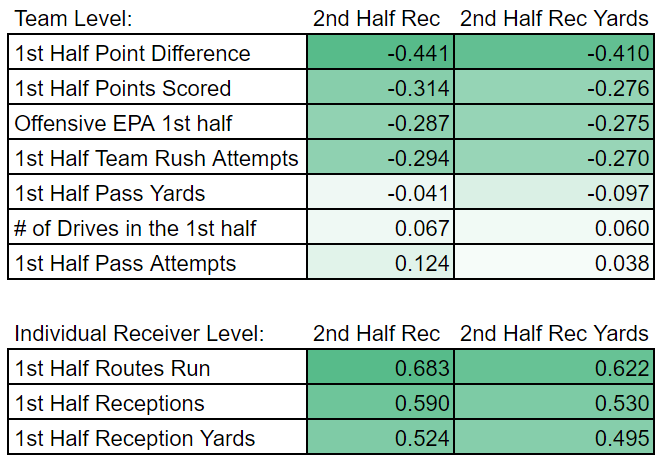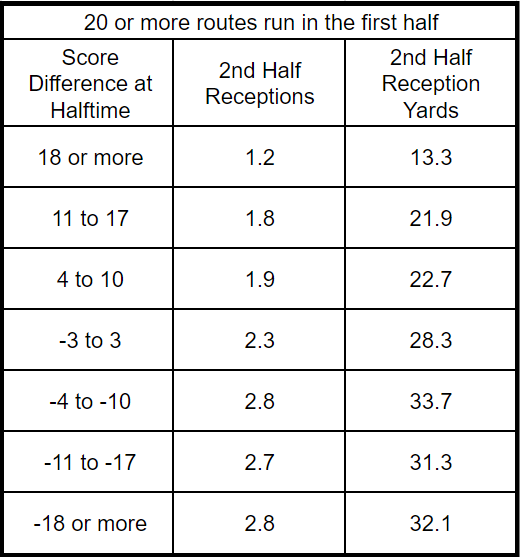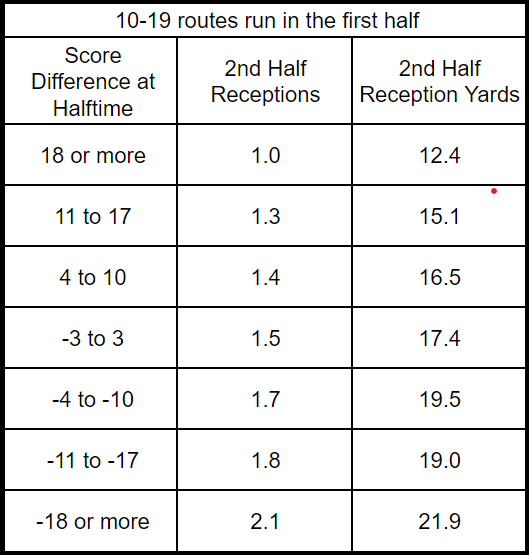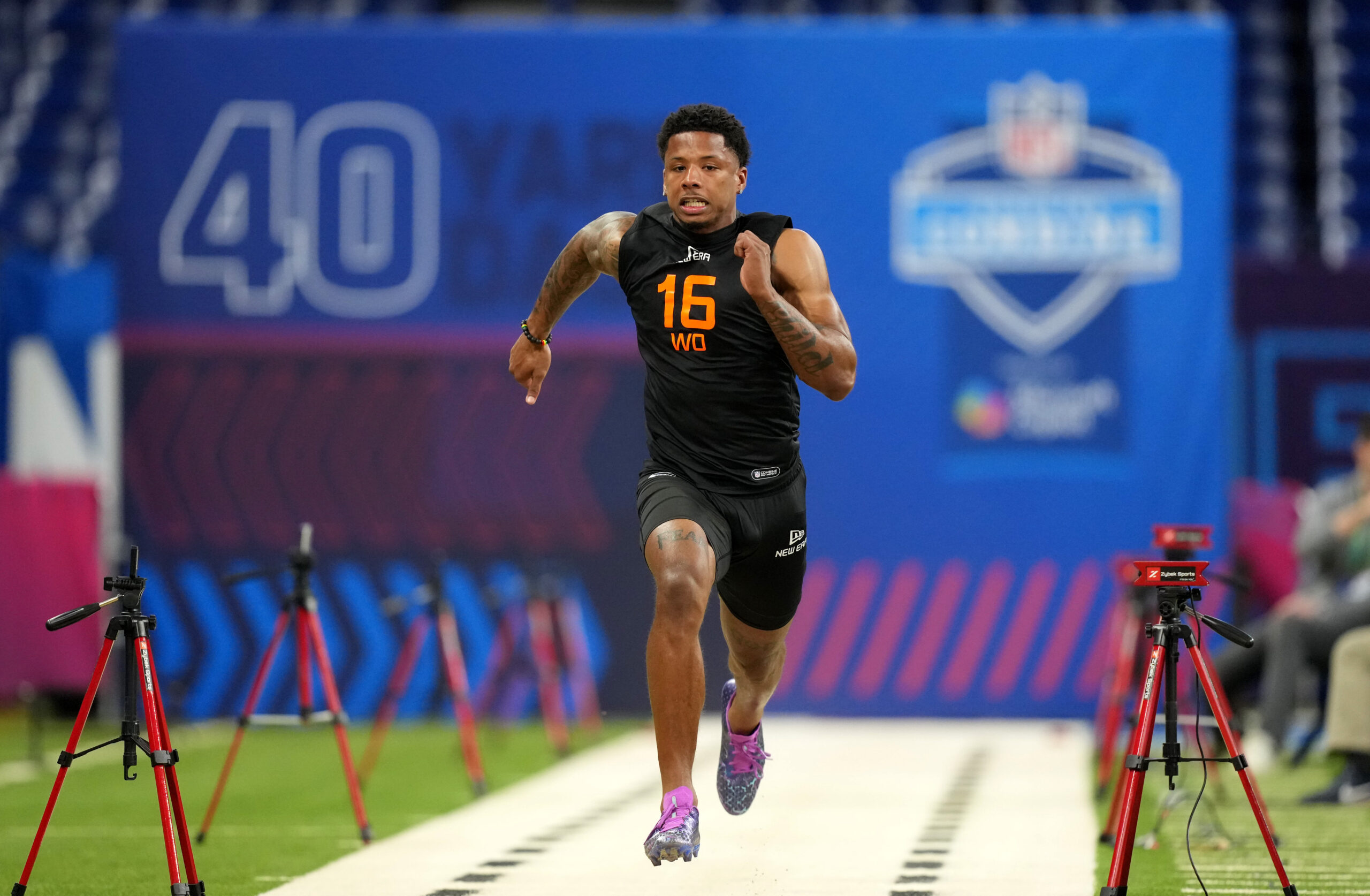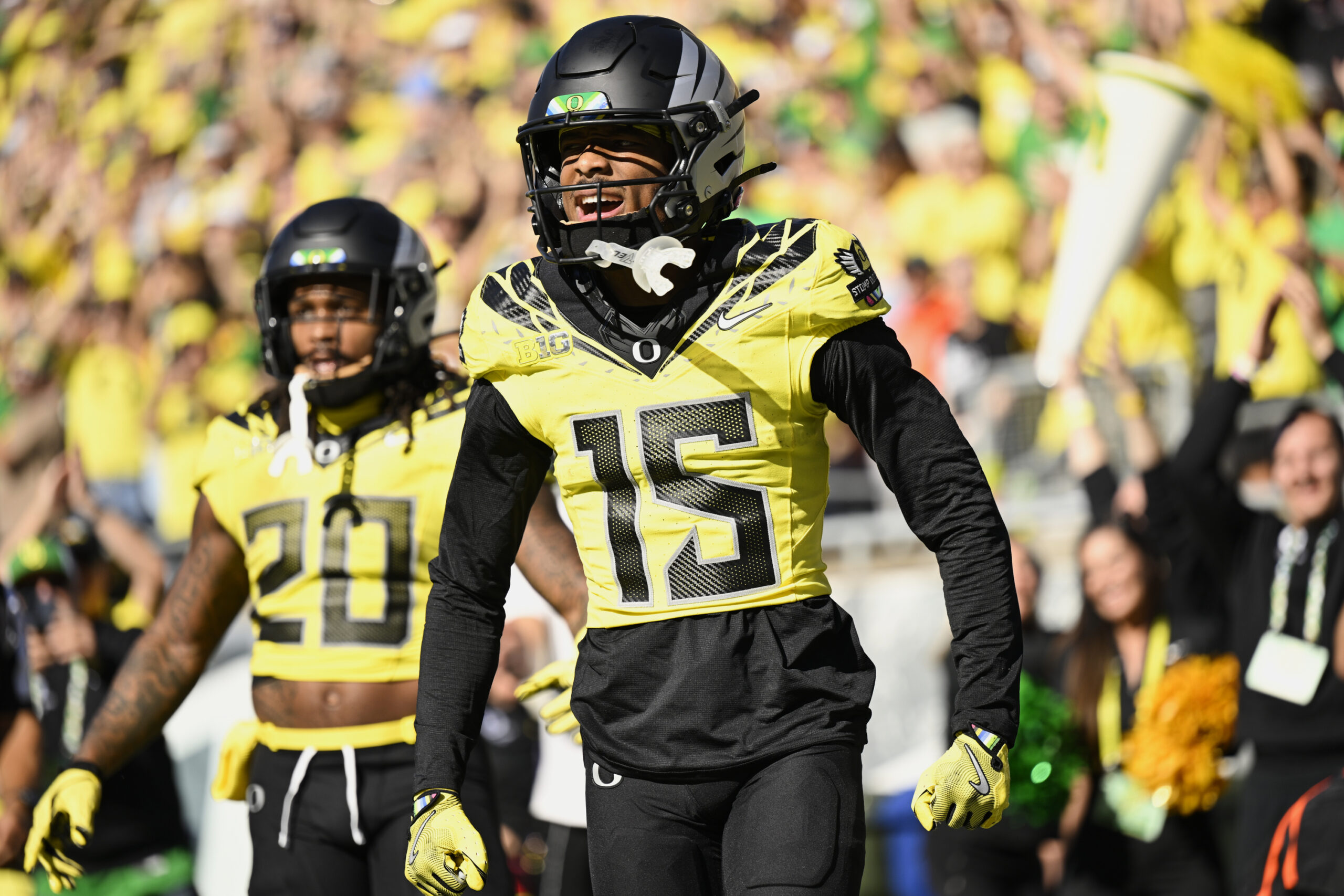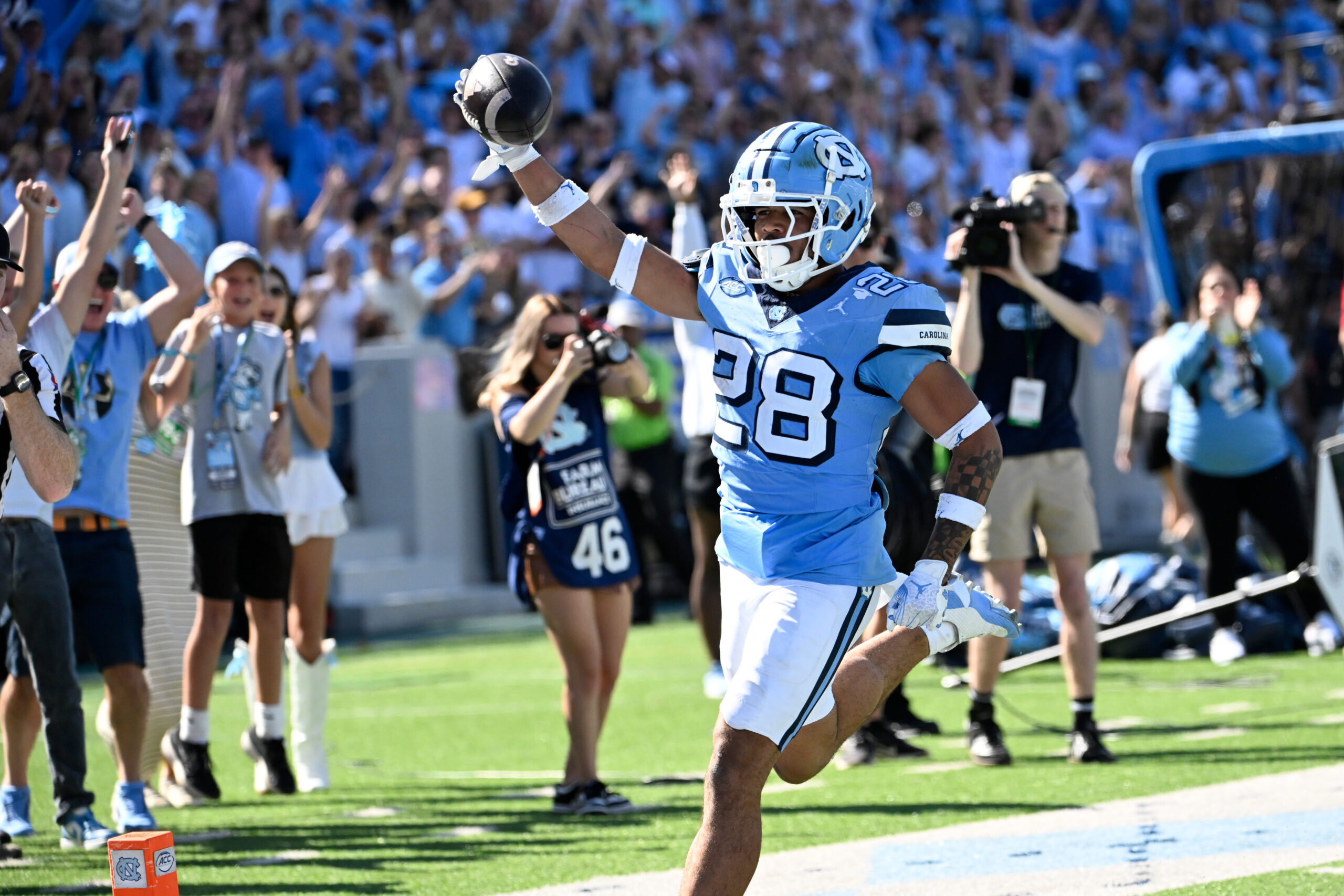Analysis
9/4/23
4 min read
Ultimate Guide to Second-Half Receiver Lines on Underdog Fantasy
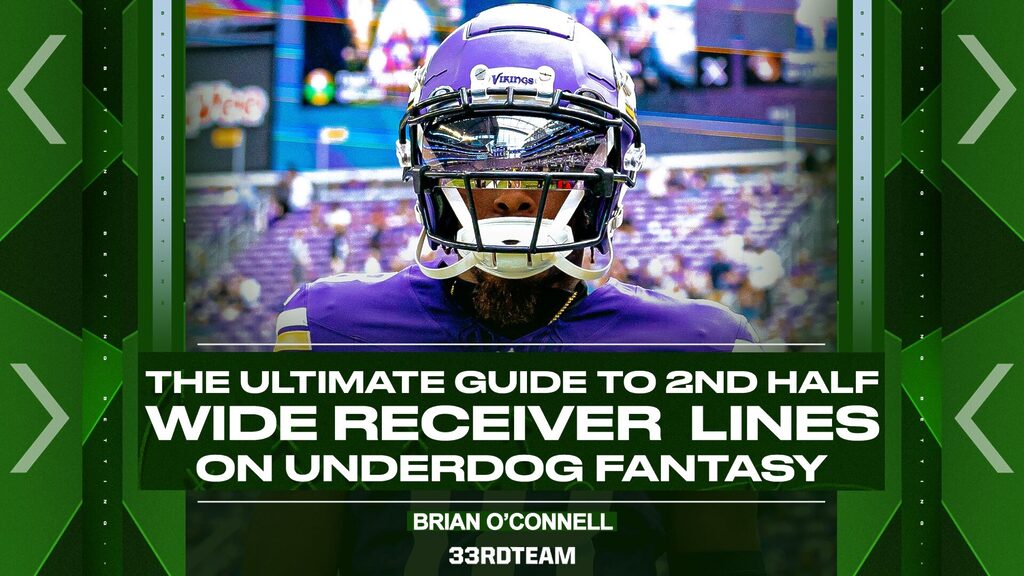
In this third and final installment of this series, we will look at a strategy for how to play second-half entries for receivers. For this article, receivers are defined as wide receivers and tight ends, so no running backs are included.
Following the same strategy as the previous articles, the first step in this analysis was to look at how second-half statistics correlate with first-half statistics. Below is a table of correlations at team and individual player levels:
Points of interest
Receivers have some of the strongest correlations of any positions we’ve studied. This was clear at the team level, where point difference at halftime has the highest correlation with second-half receptions and second-half receiving yards of any position. At the individual receiver level, there are also some strong correlations. First-half routes run have the strongest correlation with receptions and receiving yards in the second half.
Because of these strong correlations, point differences at halftime and routes run in the first half were the main statistics used to create a predictive chart.
The data is split into two charts to account for the difference in routes run in the first half. First is the chart for receivers that ran 20 or more routes in the first half:
Here is the chart for players who ran 10-19 routes in the first half:
How to use the chart
- Determine how many routes a receiver ran in the first half.
- Compare the line posted to the chart.
- Play higher or lower based on large differences in the chart and the line.
How to Use the Chart
In Week 10 last season, the Houston Texans were losing to the New York Giants, 7-3, at halftime. Brandin Cooks had a second-half reception line of 2.5, and Nico Collins had a second-half reception line of 1.5.
Both players ran between 10-19 routes in the first half. With a halftime deficit of four points, the chart tells us receivers in this situation average 1.7 receptions in the second half. That means the chart suggests going lower for Cooks and higher for Collins. Cooks finished with one reception in the second half, and Collins had four, so both plays would have hit.
What to do With Receiving Lines 3.0 or Higher
One of the first things to notice in this table is how low those numbers are. In the past two seasons, 3,514 wide receivers and tight ends ran at least 10 routes in the second half. Of that sample, only 17.6 percent, or 618, had four or more receptions in the second half.
But many elite receivers see lines posted at 3.0 or 3.5 in the second half; how do we know when to go under confidently and when to hesitate and possibly avoid the line? Again, it comes down to the game script.
From that same 618 sample of receivers with four or more receptions from above, only 180 (29 percent) occurred when the team was winning at halftime. Of those 180 times, 59 percent of those players had at least four targets in the first half.
That data tells us two situations should make you second guess going under on a player with a 3.0 or 3.5 line. First, players who are losing at half are more likely to have four or more receptions in the second half. Second, if those receivers have seen many targets in the first half, they will likely continue seeing that usage in the second half, even if the team is winning.
Basic Tips
After testing this with data with real lines from last season, the reception lines were more consistently correct than receiving yards. Receiving yards worked better with players running fewer routes.
Routes run at halftime is a difficult statistic to find with the short amount of time the lines are usually up for. If you cannot find that data, you can look at data for individual players from earlier in the season to create an estimate.
Second-half reception lines were significantly more successful than was expected. These charts make it extremely easy to come up with second-half plays without looking too much data up.
Follow The 33rd Team Podcast Network on Spotify and Apple Podcasts.

